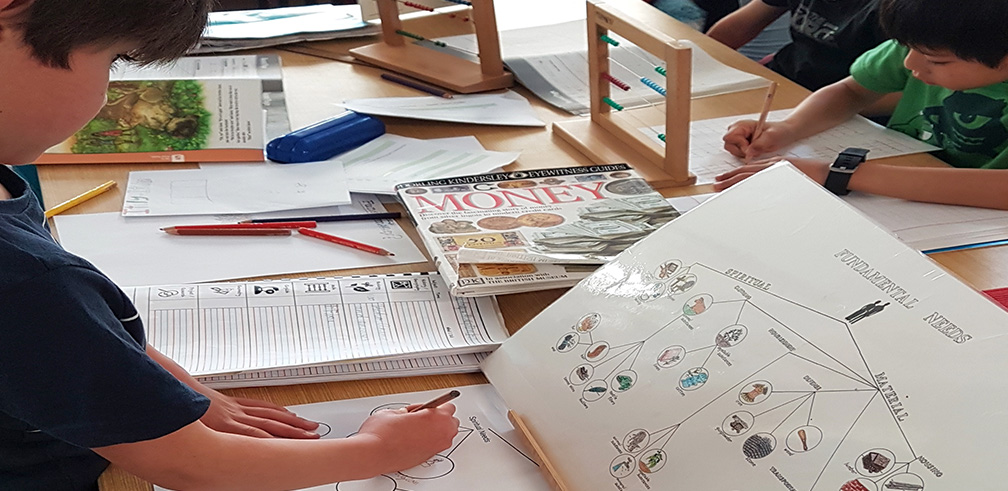Hand, Mind and History

Xarifa Gabales, Director 6-9 Environment
Humans are incredibly adaptable. We can adapt to our environment or adapt that environment to us. We can find many ways to find solutions to problems in satisfying our needs. We are flexible enough to do this in many different ways – mostly involving our hands and our minds to explore the environment.
When we think about exploring the environment with our minds and hands, we usually think of the child’s work with mathematics as it is the obvious learning area with all the specialised material. However, there is another way that we look at the work of the hand and the mind: the study of human development over time in history.
Through our Cosmic Fables of the Coming of Human Beingsand The Timeline of the Hand, as well as the Timeline of Human Beingsand our studies of civilisations and our classified nomenclature for the Fundamental Human Needs, we can see the importance of the work of the hand and the mind in human history and development.
Through these stories, we explore the following:
- The most important one would be the discovery of how to control and how to, finally, create fire.
- Discovery of how to manipulate metal into functioning tools.
- The needle.
- Shelter.
- The wheel.
- Farming.
We want the children to understand just how important history was before writing was invented and then how important writing was to record our history. We want to open their eyes so they see what they have come to take for granted is only possible due to the discoveries and sacrifices of those people of the past.
From the Montessori point of view, we want to go back as far as we can so that we can think of all humanity. We want to think of ordinary people, not just the famous, not just the few, not just the leaders, but all the people, most of whom are unknown or anonymous, those who have used their hands and minds to bring us to where we are today.
